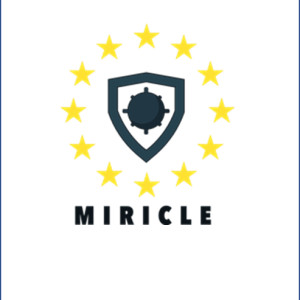How to start with DIGITAL
A step by step guidance on how to get started with DIGITAL
Application process
The NCP Flanders Digital Europe page provides a first overview of the programme. In brief it explains what Digital Europe is and which thematic areas fall under the programme.
The Digital Europe Online manual provides all practical details on the submission process of proposals on the Funding and Tender portal, how to apply for funding, what will happen after the call deadline and offers guidance for the post-grant signature/project management phase.
The application to a Digital Europe call implies four major steps.
1/ Find a suitable call for proposal
The Funding and Tender portal hosts call topics of all EU funding programmes. By choosing Digital Europe you will be directed to all calls within this specific programme.
2/ Find project partners
The majority of the call topics demand a consortium with a minimum number of consortium members from a minimum number of different European member states or Associated countries. The exact number of required consortium partners depends on the specific call topic. There are several ways to find partners to build your consortium or to present yourself to other organisations that you are interested in participating to this project as a partner.
- Your NCP: NCP Flanders can support you in identifying the most important organisations in a certain (sub)area, both at EU scale and in Flanders.
- Your own network: Your strongest cooperation links will probably come from those organisations that you already interact with. Because there is already a trust relation established. Because there is a reason for this link. For defining this network around you, dare to think broad.
- Enterprise Europe Network: a network of more than 600 partner organisations in the EU that can get you into contact with potential partners from other countries. Besides, you can get reliable information on European legislation and regulations in other member states. Moreover, the network also has antennas outside Europe.
Teams of network experts in each member organisation offer personalised services to businesses. The Network can also offer a targeted approach aimed specifically at your business sector. Its expert groups cover all key economic sectors, from healthcare to agrofood, from intelligent energy to fashion and textile.
Your local contact point in Flanders: https://www.enterpriseeuropevlaanderen.be/
3/ Create an account on the portal
Each user of the Funding and Tender portal has to have an EU Login account to log in on the Portal.
4/ Register your organisation
If you want to participate in a project proposal, your organisation needs to be registered and have a 9-digit Participant Identification Code (PIC). The 2-steps verification process for securing your registration in the Funding and Tender portal, installed in 2020, is explained by the Commission through webinars and tutorials.
NCP Flanders can give you support during your application process and provides basic information and tips and tricks to support you with preparing your proposal.
Testimonial

Miricle - Mine Risk Clearance for Europe
The Miricle project, ‘Mine Risk Clearance for Europe’, obtained funding under the European Defence Industrial Development programme call ‘Underwater control contributing to resilience at sea’. The main objective of the project was to achieve a European and sovereign capacity in future mine warfare and create a path for the next generation ‘made in Europe’ countermeasure solutions. In order to realise this objective, Miricle addressed various stages: studies, design, prototyping and testing. These stages inter alia included the successful testing of an XL Unmanned Underwater Vehicle, a protototyped mine disposal system and multiple innovative systems to detect buried mines. Flanders Marine Institute (VLIZ), was one of the five Belgian partners in the consortium. Within the project, VLIZ was able to forward its research on the acoustic imaging of the seabed to spatially map and visualize buried structures and objects - in this case buried mines - in the highest possible detail. VLIZ also led the work on ‘Port and Offshore Testing’, building on the expertise of the institute in the field of marine operations and technology.

